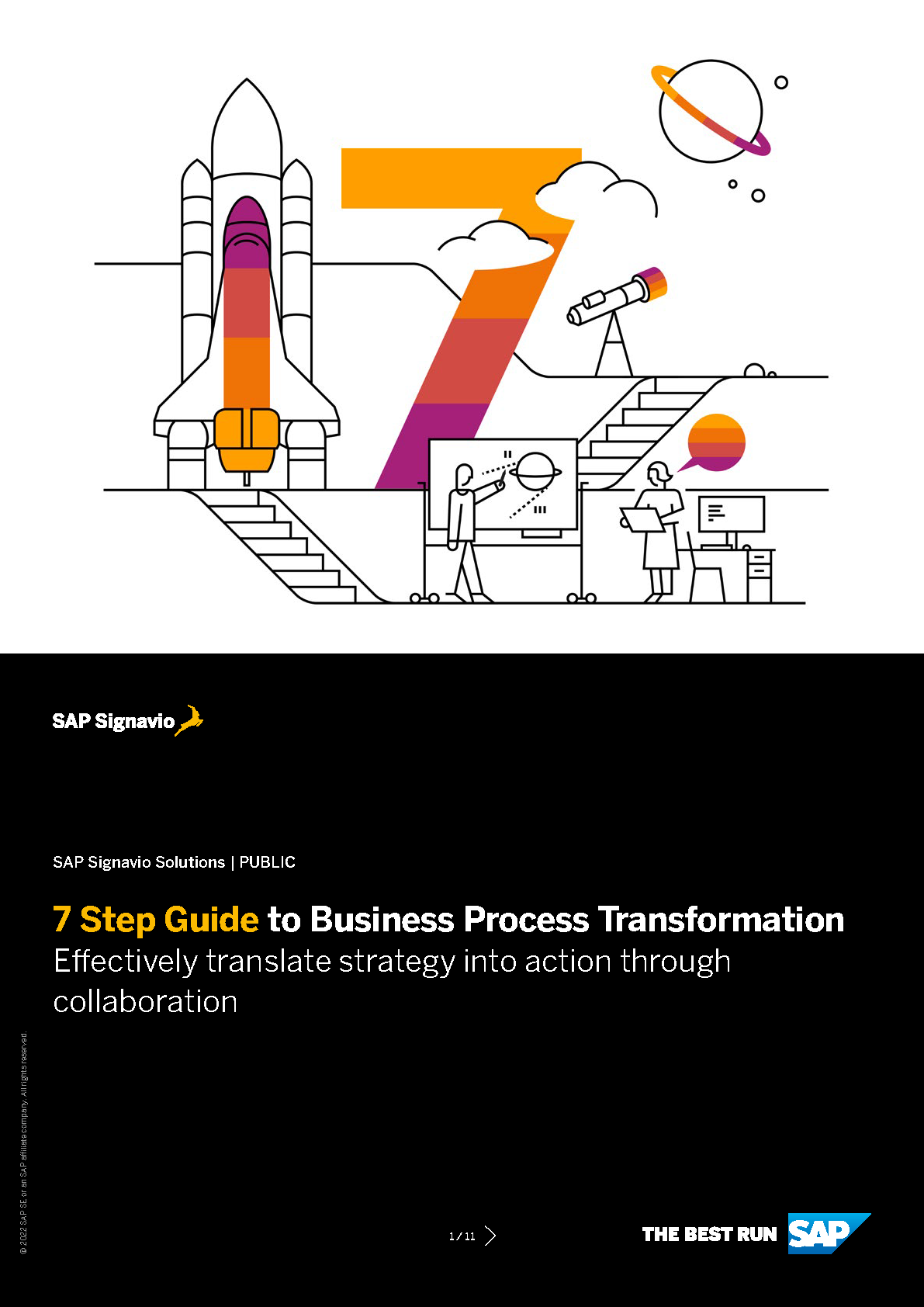Advantages of Business Process Management
Business process management (BPM) is a discipline that helps organizations improve how work gets done. It enables continuous improvement, leading to greater efficiency, better teamwork, and lower costs.

Business process management (BPM) is a discipline that helps organizations improve how work gets done. It enables continuous improvement, leading to greater efficiency, better teamwork, and lower costs.
Business process management plays a central role in digital transformation by giving companies the structure needed to optimize operations, adapt to change, and stay competitive.
This page explains how BPM compares to similar tools and why its advantages matter across all business levels—from leadership to frontline teams.
Related: What is a business process?
In a landscape that is increasingly dominated by AI and automation, organizations that lack a structured, software-based approach to process improvement risk falling behind.
BPM solutions support a cohesive, transparent operational strategy that works across management, operations, and support functions.
Related: The value of business process management
While many tools support aspects of business operations and help reduce human error, BPM stands out for its comprehensive strategic capabilities. Unlike niche solutions that address isolated parts of the workflow, BPM can help users obtain a holistic overview and governance framework.
In this section, you can see how BPM stands up to six popular alternatives and integrations.
| Tools | What it does | How BPM adds value |
|---|---|---|
| Process mining | Analyzes event logs to uncover inefficiencies | Adds modeling and redesign for continuous improvement |
| RPA & workflow automation | Automates repetitive tasks | Brings governance and end-to-end strategy to automation |
| Low-code/no-code | Speeds up app development | Prevents workflow fragmentation and shadow IT |
| BRMS | Manages decision logic | Integrates decisions into end-to-end processes |
| iPaaS | Connects data and apps | Adds orchestration and outcome alignment |
| Customer journey mapping | Visualizes user experiences | Connects front-end to operational processes |
Definition: Process mining tools analyze event logs from IT systems to visualize how a complex process is executed. Through this type of business analysis, they help uncover inefficiencies and deviations, which is why they are seen as an alternative to BPM.
Comparison: While process mining tools focus on analyzing existing workflows based on event logs, BPM platforms allow for modeling, simulating, and redesigning processes for future optimization. This enables strategic planners and operations managers not just to diagnose inefficiencies, but to act on them proactively with an improvement roadmap.
Where BPM wins: Enables transformation, not just analysis.
Definition: Robotic Process Automation (RPA) and workflow automation focus on automating repetitive, rule-based tasks to increase speed and reduce manual workload. This is another BPM alternative.
Comparison: RPA is about automating repetitive tasks, but it lacks overarching process governance. By working with BPM, digital transformation leads and IT departments will have the necessary context to ensure automation aligns with enterprise-wide objectives.
BPM benefit: Delivers scalable, goal-aligned improvements that go much further than departmental cost-cutting.
Definition: Low-code/no-code platforms allow users to build software applications with minimal or no coding, primarily for task- or application-specific needs. This means functionalities may overlap with BPM.
Comparison: Low-code tools contribute to fast application development but can lead to fragmented process logic without governance. BPM allows CIOs and compliance teams to enforce standardization and documentation across all process activities while avoiding shadow IT.
Where BPM helps: Supports long-term compliance and structured innovation.
Definition: BRMS manages and automates decision logic separately from process logic. This enables dynamic rule changes without redeploying entire applications. They can be integrated with BPM.
Comparison: BRMS focuses on managing decision logic but often lacks business process automation. When they are integrated into a BPM system, business analysts and compliance officers are better able to embed rules within the broader business context to ensure seamless process execution.
Advantage of integrating with BPM: Decision rules are applied in broader workflows to enable consistent decision-making that is traceable within end-to-end workflows.
Definition: Integration platforms as a service (iPaaS) connect disparate applications and data sources to streamline information flow between systems. They support the business process management lifecycle by connecting systems.
Comparison: iPaaS tools connect applications but do not orchestrate business logic. When IT architects and enterprise system designers connect them with BPM, this connectivity is overlaid with logic, rules, and goals to create true digital processes.
The benefit of connecting with BPM: Maximizes the impact of connected systems through alignment with business outcomes.
Definition: Customer journey mapping tools enable users to visualize user experiences across touchpoints to improve customer engagement and satisfaction. They complement BPM by providing the user-facing view of internal processes.
Comparison: Journey mapping tools capture customer interactions but often lack linkage to back-end processes. BPM connects the external view with internal operations to enable CX leaders and marketing strategists to create a unified transformation platform. In tools like SAP Signavio, they are already built in.
Why use with BPM? Helps deliver seamless customer experiences while improving operational efficiency.
The most important advantage of business process management is improved efficiency. When teams streamline how work gets done, they eliminate delays, reduce manual effort, and deliver better outcomes. This operational clarity benefits every part of the organization—from customer service to IT, finance, and HR.
Below are 15 core advantages of BPM, along with their organizational impact and metrics you can use to track progress.
Streamlined processes have fewer redundancies, bottlenecks, and manual tasks. This frees up valuable employee time for more strategic activities. Faster turnaround and greater consistency contribute to lean operations and higher throughput. Operations teams become more productive, with reduced dependency on manual interventions.
Using BPM helps customer-facing teams address needs more efficiently and effectively. More consistent service delivery ensures fewer errors and quicker resolutions. This seamless customer experience leads to higher loyalty and better brand perception.
BPM eliminates wasteful practices and inefficient processes and consolidates tools and systems. As a result, the business activity experiences significant savings through optimized resource use, better productivity, and reduced rework. Finance and procurement gain measurable cost reductions.
Business process management tools centralize process-related data and visualizations for better analysis of the business landscape. In this way, leaders can make informed decisions faster and with greater confidence. Executive leadership and operational managers gain clearer insights.
BPM enables quick adjustments to processes in response to market, regulatory, and operational changes. In this way, organizations stay resilient and competitive even under fluctuating conditions. Strategy and project management functions become more responsive and adaptive.
It is possible to use BPM to enforce end-to-end process documentation and audit trails to ensure standardized execution. By doing this, organizations can avoid regulatory fines and enhance accountability. Legal and compliance departments gain better control and oversight.
Business process management software delivers full visibility into workflows and responsibilities across the organization. This leads to improved decision-making and reduced delays caused by unclear ownership or process ambiguity. Management, audit, and operations benefit from clearer insight and accountability.
By using a process management platform, it is easy to create consistent employee onboarding processes across departments and regions. This reduces administrative burden and ensures new hires become productive more quickly. HR departments benefit from reduced training time and improved compliance.
Via business process automation, project managers can introduce structured planning and task tracking in project execution. As a result, they can better ensure timely delivery and resource balancing and avoid project overruns. Project management offices and development teams benefit from improved transparency and accountability.
Through well-defined workflows, a BPM system helps clarify expectations and responsibilities. Consequently, employees can act independently within structured guidelines. This boosts morale and reduces managerial overhead. All departments see gains in efficiency and job satisfaction.
BPM tools enable users to implement role-based access to sensitive data and processes. This increases data protection and compliance with regulations like GDPR. IT and compliance teams experience fewer breaches and auditing becomes easier.
A business process management system can be used to enforce consistent procedures across units and geographies. This business process improvement decreases variation and increases quality control. Operational teams and quality assurance areas see fewer errors and better uniformity in products and services.
BPM supports iterative process analysis and refinement, which means it empowers teams to identify and act on optimization opportunities. Organizational development and strategy teams get better at fostering innovation and growth.
A BPM platform can connect seamlessly with enterprise resource planning (ERP), customer relationship management (CRM), HR, and other enterprise systems. By managing business processes in this way, business users enjoy enhanced data sharing, fewer silos, and better process continuity. IT operations and process managers gain unified control over end-to-end workflows.
When optimizing and managing business process capabilities with BPM software, it is possible to combine functionalities that are often spread across multiple tools. This reduces the cost and complexity of transformation. Enterprise architects and transformation leaders gain a streamlined ecosystem that improves governance, reduces duplication, and ensures all change initiatives align with strategic priorities.
Like with any type of change in an organization, when you start implementing BPM methodologies and a process automation platform, it is likely you will encounter internal resistance.
Understanding the common sources of friction will help you plan effective strategies to convince stakeholders and overcome implementation challenges.
BPM empowers organizations to make data-based decisions that drive performance, reduce costs, and help them adapt faster. It can be integrated with existing systems to improve efficiency across departments and can even replace some tools.
By understanding and measuring the advantages discussed in this article, you can make a strong case for BPM as a cornerstone of your digital strategy.
Download the 7-step guide to ensure future process transformations are smooth and repeatable.

